Floor screed: a short educational program on the device of various types of screeds do-it-yourself
What is a floor screed? This is the layer that serves as the basis for flooring, in simple terms. It is necessary for perfect leveling the floor and giving a certain rigidity to its surface, the necessary slope and hiding of engineering communications. But sometimes screeds can be a finishing surface, as in technical rooms.
We can say that the screed is an intermediate layer of floors between the finishing coating and the base. And the better and more professional it is made - the more durable the floor itself will be. Therefore, floor screeds are different in the way of adhesion to the overlap, in the way of laying and composition. Now we will examine in more detail how they differ from each other and for which flooring which is better.
Content
Types of couplers by the way of coupling
So, the couplers according to how they are connected to the foundation plate or floor slab, are connected, on the separation layer and floating. About each - more.
Tied floor screed
This screed is placed directly on the work surface and is bonded with it due to adhesion. There is neither hydro nor thermal insulation between the layer and the floor. A coupler tightly coupled to the floor is made in such cases:
- when there is no opportunity to raise the floor level - otherwise the doors will then not close or the ceiling becomes too low;
- when the screed should be very light;
- when the foundation is perfect;
- when the screed area is too large.
Basically, a monolithic coupled screed is ideal for those rooms where massive pieces of furniture and equipment, partitions or warehouse objects will stand. This is a heavy screed, a square meter of which weighs up to 150 kg.
When arranging such a screed, remember: floor beacons are not placed on the base, but are “suspended” on pieces of hard mortar or self-tapping screws. Then these slats remain in the body of the screed. Here is the process of making such a screed:
Screed on the release layer
In this case, the screed is separated from the lower layer by thermal insulation or waterproofing, but it does not come into contact with the walls of the premises.
So, thermal insulation under the screed is placed in order to reduce heat loss. It usually consists of hard mineral plates, the thickness of which is from 30 to 90 mm - here everything already depends on the heat loss of the room and the mode of its heating. So, 30 mm of thickness is enough for the first floor of a private house, and 90 mm is already needed for basement floors. Often, foam boards with foil are used today as an insulator for screed.
The main task of such waterproofing is to protect the entire screed cake from moisture. A screed with a waterproofing layer is indispensable for arranging floors in bathrooms, a bathroom, a cellar, an attic under the roof and floors of the first floors. Here is a detailed workshop:
Floating screed
A floating screed is so called due to the fact that it is on a certain pillow of an insulating layer, heat, sound or hydro.This type of screed is suitable only for laminate, linoleum and parquet board. But for the parquet - no longer.
A floating screed is most relevant when your floor needs to be insulated or you plan to put in good sound insulation. In general, a floating screed is indispensable for such rooms:
- in which, for various reasons, it is impossible to qualitatively prepare the base or it is difficult to remove dust, for example;
- where warm floors are laid;
- in apartments of a storey building, where it is vital to waterproof, insulate and soundproof the floor;
- where the risk of cracking is high;
- where the screed needs to be done quickly and inexpensively.
But keep in mind that if you use additional plasticizers for the floating screed device, then the screed itself will need to be reinforced. And making a screed on an electric floor, it is necessary to put a heat insulator under it - so as not to heat the lower floor.
And finally, a floating screed rarely gives cracks - after all, it is not tightly coupled to the base itself, and it does not “drive” it. As for its arrangement, such a screed is necessarily separated from the walls by insulation - this avoids unnecessary stresses in the building structure. And this is especially important if you equip a warm floor - it has a significant coefficient of thermal expansion. In addition, the damping tape, which is usually used as such insulation, can significantly reduce heat loss through the walls.
By the way, experienced builders do not separately glue the damper tape on the walls - but build it from the entrance of the film (up to 20 cm). Excess film is then not difficult to crop.
We also note that even a screed on a plastic film alone is also called “floating”, because without it, she already behaves differently. And another tip - when arranging a floating screed, do not overdo it with water - it will intensively come to the surface, thereby diluting the cement milk. And this will weaken the stiffness.
Types of screeds by the way they are laid
So, in each case and for different floor coverings, the screed is either solid, self-leveling, or semi-dry. Let's see what and why.
Continuous screed
This screed is made by hand, and then carefully level it with a special tool. Everything is quite simple: mix in a gravity mixer. Add water until you hear the characteristic “splashing” of the solution. When filling the screed, pay attention: if water came out on top, it means there was too much of it, and the shrinkage would be significant. Total: cracks. Here, the freshly prepared mixture is poured over the entire base and leveled with a special tool. The surface of the screed hardens quickly, evenly and well adhered to the supporting base.
Semi-dry screed
Semi-dry screed gradually supersedes the classic liquid method. And all because such a screed does not require additional alignment with special bulk floors and the process itself is not complicated.
This screed is usually arranged in order to reduce the cost of the overall process. Here you can save a lot on consumables or on the amount of water for quick drying. And in order for such a screed to be strong, special polymer compositions are added to it, accelerating the adhesion processes and improving the final quality of the screed.
A semi-dry screed also has many valuable advantages:
- ability to withstand significant loads;
- perfectly flat surface;
- minimal risk of cracking;
- the ability to easily equip a warm floor;
- minimum costs and excellent final quality.
This screed is also called dry, because the leveling of the floor in this case occurs due to bulk material (usually expanded clay crushed stone) and the laying of durable plates. The process itself:
Self-leveling screed
This screed has a higher fluidity composition. Apply it on a sealed base, and under its own weight, it creates a perfectly smooth surface.In more detail - on photo instructions:
Prefabricated screed
Modern prefabricated screeds are ready-to-install elements. Mount them from large-sized plates: plywood, Fiberboard, particleboard, GVL and the like. By their weight they are quite light, and therefore even one person can arrange such a screed. Moreover, “wet” processes are no longer here, and therefore on the same day you can start laying the front flooring.
However, a prefabricated screed is not suitable for all genders. There is an important point: if dry screed you will be satisfied with the construction team, then clearly stipulate in advance with them what the permissible deviations will be. So, for laminate flooring such an error should be no more than 2 mm! But, if the work team takes responsibility, or if you do such a screed with your own hands and are confident in your skill, go ahead! Also, it is worth noting that a dry screed is arranged where it is impossible for water to come into contact with the base (namely, cement is diluted with water when arranging other types of screed).
We can say that such a prefabricated structure is only conditionally called a screed, because it is a crate with a variety of filling and coating materials. As the last usually there are edged or tongue-and-groove boards, chipboard, TsSP, OSB or modern bulk floors like Knauf. The lags are adjusted so that the floor is perfectly flat. And the dry screed of GSP plates consists of two layers, the second being connected to the first PVA glue and self-tapping screws. Moreover, in the last GSP boards for dry screed are becoming more and more popular - and even more in demand, like GVL. They are environmentally friendly and durable, and their only minus is dust during cutting and tangible weight.
It is worth noting that prefabricated floors have approximately the same number of supporters and opponents around the world. So, a dry floor screed is perfect for concrete floors, and for earthen, and for slabs-voids. Even on wooden boards, after some modifications, you can arrange a screed using this technology. Dry screed rough floors are durable, warm, do not collapse, do not dust, are not afraid of moisture or fire, have excellent sound insulation and are quite durable. For tile, carpet, linoleum, parquet and parquet board - a wonderful foundation!
Here is another plus of modern prefabricated floors - in case of improper installation, you can easily disassemble them again, but dismantling a cement screed is an extremely laborious and expensive task. See how the dry screed assembly process looks like:
And we note one more important point: the prefabricated screed can, without exaggeration, be called the most soundproof of all of the above. And the whole thing is in its structure. The fact is that a homogeneous thin layer for sound is a wonderful conductor, but a multilayer floor with materials with different densities is already an obstacle. Moreover, the lower the density of the layers themselves - the better. So, foam, foamed polyethylene, and the same mineral wool absorb sound almost completely. And therefore, if your neighbors from below constantly complain about the noise from your apartment, or you choose floor to the nurseryPrefabricated screed is the best choice.
But keep in mind that it is difficult to do a prefabricated screed in an apartment not on the first floor. Gypsum-fiber, cement-bonded, particleboard and gypsum plasterboards are completely inconvenient to raise to the upper floors. But in a private house in the middle of winter they are convenient to use and they are easily assembled for self-tapping screws, while they can no longer arrange another type of screed at sub-zero temperatures. And finally, the prefabricated screed is never equipped where there is high humidity. And, no matter how manufacturers would assure that such plates are not afraid of moisture - this is not so.
Types of screeds according to the composition of the material
Screeds are also different in what materials they are made of. It is on this that their strength, quality and other important characteristics depend.For example, according to SNiPs, a screed made of asphalt concrete can only be under piece grooved parquet.
Cement and sand screed
Among builders there is an opinion that while it is better than usual cement-sand screed nothing invented. It is durable, understandable by technology and suitable for almost all types of coatings.
Under such a screed, it is desirable to put hydro and sound insulation. She will never let water down - such is her structure. But in the process of its installation, the situation is quite dangerous when water from the solution is sucked into the floor slab - in the apartment a floor below you will have to make repairs. That is why for multi-storey residential buildings it is possible to make screed only using semi-dry or dry technology.
Yes, not many people know how to make a cement screed correctly, and therefore you can often see gross violations of technology. Such a screed is no longer suitable for use, because cracks and air bubbles are not a cosmetic defect, but a sure guarantee that any floor covering will not last long. Dismantling a defective screed is expensive.
Therefore, when installing such a screed, it is important to completely exclude the possibility of local suction of water (through other materials). Otherwise, this will lead to uneven drying of the surface, internal stresses, and, as a result, cracking. That is why under the cement-sand screed almost often put a substrate of EPG - a wonderful noise isolator and protection against water.
See how the process of creating such a screed looks like:
It is also quite problematic to make a cement-sand screed in the city - it is difficult to find clean sifted sand there. In addition, a lot of dust forms from the cement, and it’s quite difficult to carry it to the second or fifth floor.
Gypsum screed
This type of screed is also popular today. After all, gypsum, unlike cement, is absolutely environmentally friendly. Thanks to this material, it is much easier to provide the desired humidity and temperature in the room, which is what you need for a residential building.
Industrial screed
Concrete grades with special strength are already used here, reinforcement and special measures are necessary to prevent cracks. Indeed, the industrial exploitation of floors is always a heavy load, both static and dynamic, falling heavy objects and sometimes serious abrasive effects.
In production industrial floor screed plate separation technology is also used - this is necessary in order to prevent the appearance of cracks under significant loads. Industrial screed is also treated with special impregnations to give additional strength and chemical resistance.
As for the reinforcing mesh, which serves to strengthen the concrete screed, it is used once or twice - “double reinforcement”. Check out this photo tutorial:
Screed with plasticizers
Today, often in concrete screed add special plasticizers. They increase the level of thermal conductivity and strength, reduce the surface tension of water and contribute to an increase in the bulk density of the coating. The amount of plasticizer is 10% by weight of pure cement.
But keep in mind that plasticizers, especially the second group of effectiveness, at maximum dosages prevent the cement from setting and hardening. This is especially true for those that contain lignosulfonates or their modifications. This means that screed work can take a long time, and the final strength will be 20% less.
But in general, plasticizers in the screed are good in that they allow you to use less water, improve the adhesion of the screed to the base and the mass itself is more plastic, it is easier to put. As a plasticizer, builders often take ordinary PVA glue - 150 g per bucket of cement.
Semi-dry screed with fiberglass
This cement-sand screed is made using semi-dry technology, but already using synthetic fiber.For this, you will need mechanical mixers, in which fibers of plastic or metal are added. They are necessary to give the screed strength - higher or similar to reinforced concrete. Here is the process itself:
Types of screeds for the intended purpose
Also, according to their purpose, the screeds are divided into leveling and leveling-heat-insulating. So, the first view is arranged only in order to give the base the necessary parameters: evenness, height and a certain slope (it can be equal to zero). The second type, in addition to its primary function, also performs a secondary one - it creates the effect of thermal insulation of the room.
Now you understand why you can’t say which screed is better - each type exists for certain gender requirements. Therefore, choosing, proceed from what the flooring will be, calculate future loads, assume the humidity and temperature changes of the room, the possibility of further repairs and environmental requirements (for example, if we are talking about a children's room).
Have you chosen? And now study on our website how to make the option of a coupler necessary for you do it yourself!

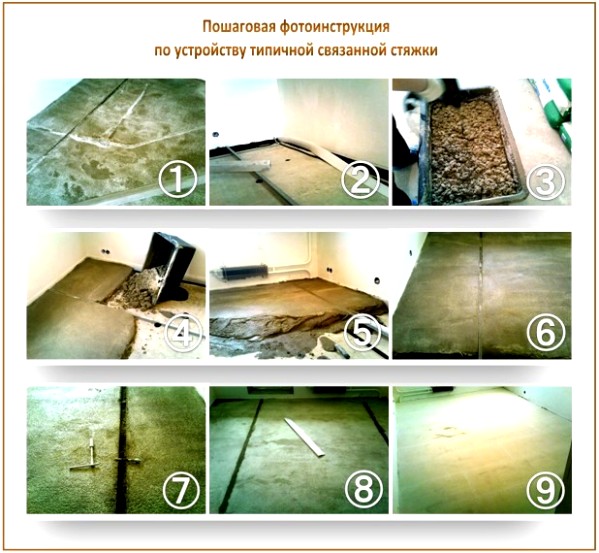
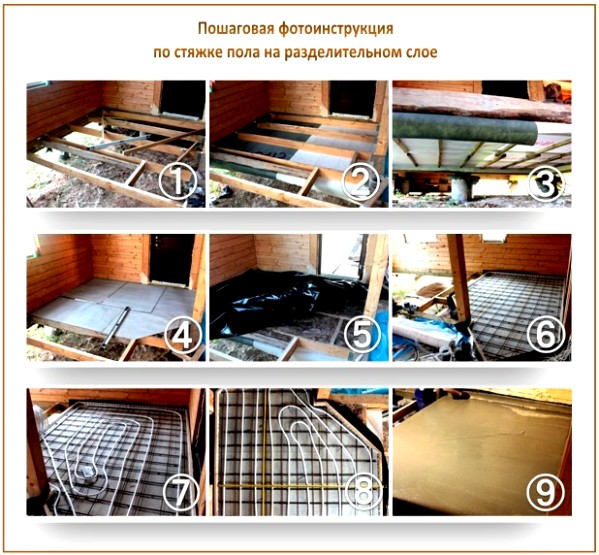
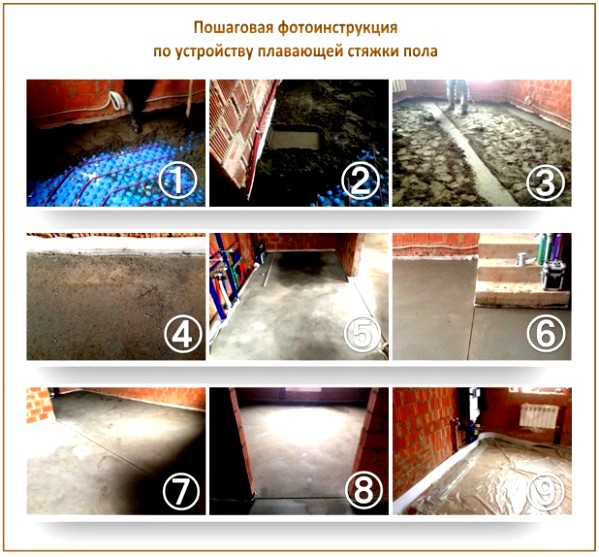
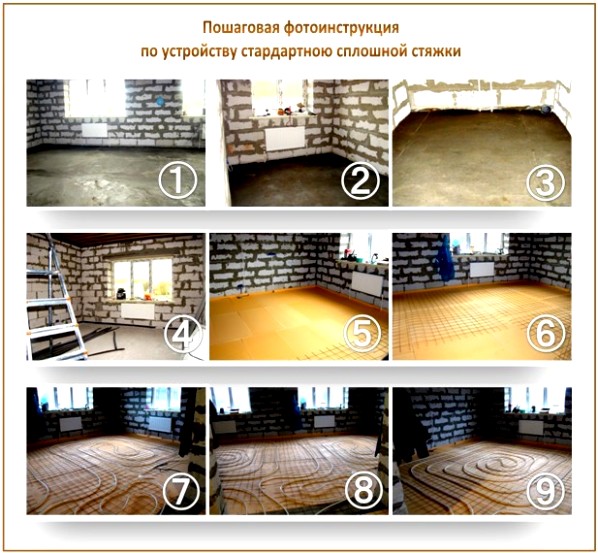
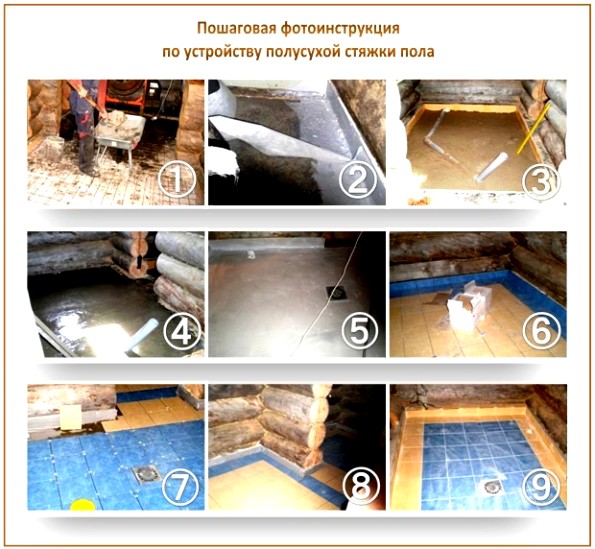
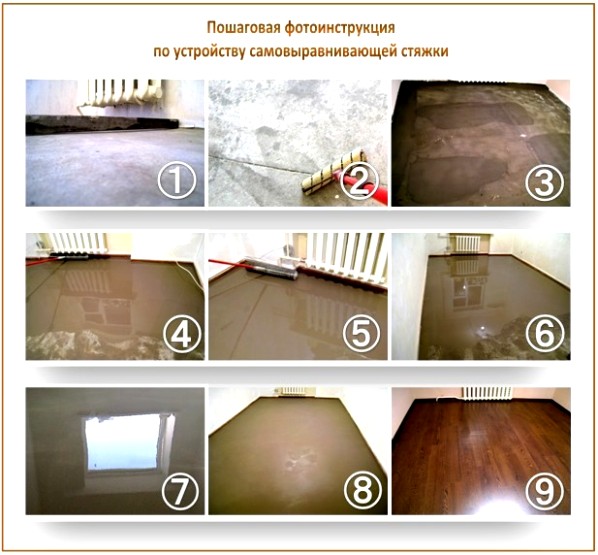


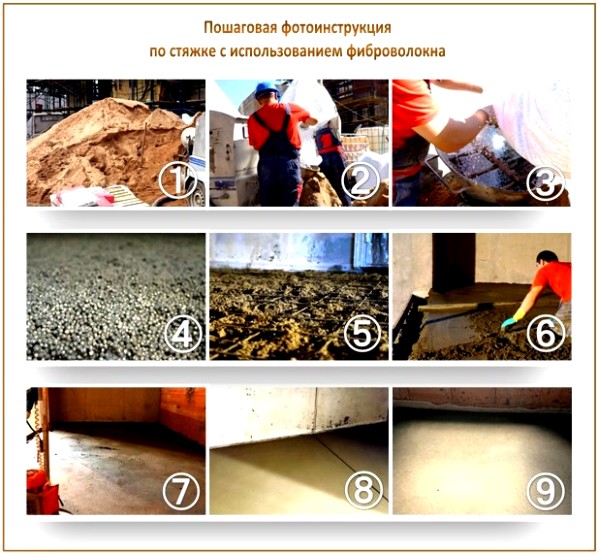

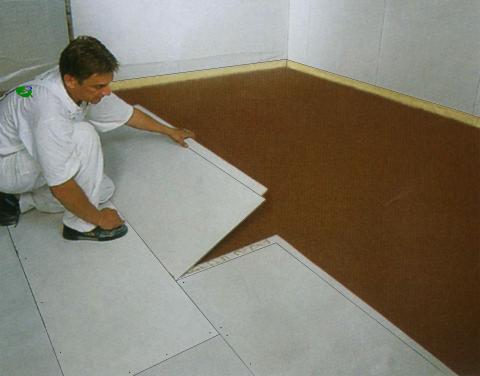
6 comments